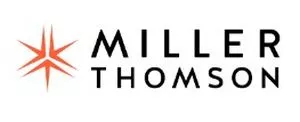- with Senior Company Executives, HR and Finance and Tax Executives
- with readers working within the Accounting & Consultancy, Banking & Credit and Business & Consumer Services industries
The Canadian renewable and conservation expenses ("CRCE") regime was introduced in March of 1996 to make clean energy projects (e.g. wind, solar, hydro) more attractive to industry. Under this regime, expenses incurred for specified development work in the clean energy sector are fully deductible when incurred and may be carried forward indefinitely. The creation of this regime has not only been beneficial to the clean energy sector, as upfront costs can be very significant, but also puts the sector on a level playing field with the tax treatment of the non-renewable resource sector (i.e. Canadian exploration expenses).
More recently, the Minister of Finance (Canada) released the Fall Economic Statement on November 21, 2018 which included favourable measures for investments in clean energy equipment. Specifically, the full cost of clean energy equipment in Classes 43.1 and 43.2 acquired after November 20, 2018 and available for use before 2024 may be immediately written off, without application of the half-year rule. The enhanced allowance will gradually be phased out starting in 2024 and completely phased out for equipment that becomes available for use in 2028 or later. Prior to the measures introduced in the Fall Economic Statement, clean energy equipment qualified for a CCA deduction of 30% on a declining balance basis if it was acquired before February 23, 2005 (Class 43.1) and 50% if it was acquired after February 22, 2005 and before 2025.
Hopefully the new enhanced allowance will have the intended consequence of boosting investment in the clean energy sector and expanding the production of clean energy equipment in Canada.
The content of this article is intended to provide a general guide to the subject matter. Specialist advice should be sought about your specific circumstances.
[View Source]



